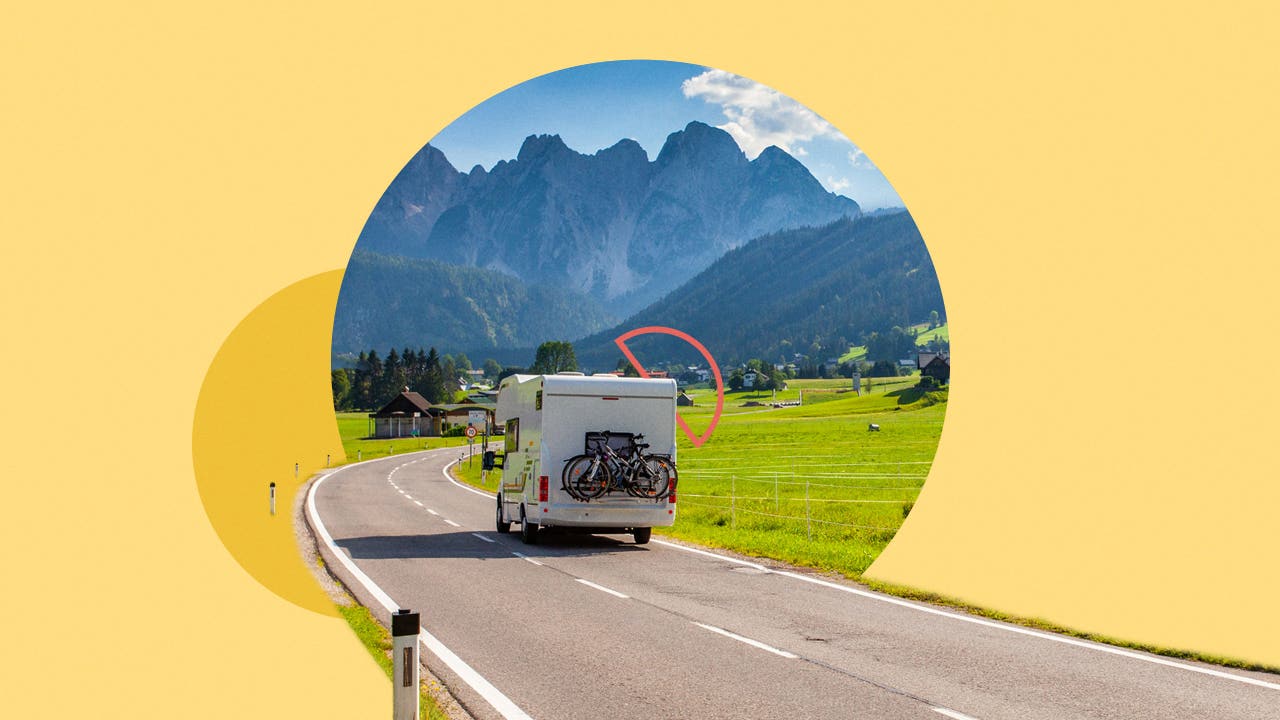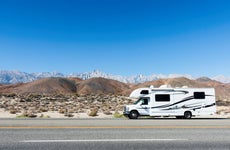What is an RV loan and how does it work?

The Bankrate promise
At Bankrate we strive to help you make smarter financial decisions. While we adhere to strict , this post may contain references to products from our partners. Here's an explanation for .
Key takeaways
- The type of RV you buy and how often you plan to use it could impact the RV loan terms you're offered.
- RV loan terms can be up to 20 years for secured options or two to seven years for unsecured loans.
- Loan amounts for RVs can range from $10,000 to over $1 million.
- RV loans can be obtained from various lenders, such as banks, credit unions, online lenders and RV dealerships.
RV loans work similarly to other types of installment loans. If you qualify, the lender gives you a lump sum to pay for your RV and you make monthly payments of principal and interest until it’s paid off.
With RV prices ranging between $10,000 and $1 million, most people finance them by taking out an RV loan. The RV financing process can be as simple as getting a personal loan or as complicated as qualifying for a mortgage to buy a home, depending on how modest or luxurious your RV is.
Gaining a better understanding of how these loans work can help you decide whether they’re a good fit for you.
What is an RV loan?
An RV loan is a secured loan used to finance the purchase of an RV, camper or travel trailer. Lenders generally qualify you for an RV loan based on your credit, income, total debt and the specifications of the RV you’re financing. Your RV becomes collateral for this type of RV loan and the lender can repossess your RV if you default.
You can also use an unsecured personal loan to buy an RV. Since your RV isn’t collateral for the loan, you qualify based on your credit income and debt-to-income (DTI) ratio. Both secured and unsecured RV loans are usually installment loans, which means you receive all of your funds at once and make monthly payments based on the terms you’re approved for.
Secured RV loans vs. unsecured loans
There are different benefits and drawbacks to financing an RV with a secured or unsecured loan. The amount you need, your credit profile, what type of RV you’re buying and what you’re using it for will have an impact on which RV loan type is best for you.
Pros and cons of secured RV loans
You’re likely to be offered a secured RV loan if you buy your vehicle from a dealership. There may be special discounts or perks for using a dealership’s in-house lender.
Alternatively, your credit union or local bank may offer secured RV financing with rates and terms based on your banking relationship. Online RV lenders may also offer secured loan options for good and bad credit.

Pros
- May be able to buy and finance your RV in one place.
- Possible lower rates and fees than unsecured personal loans.
- Higher loan amounts available than unsecured loans.
- Terms of up to 20 years are usually available.

Cons
- Lender could repossess your RV if you can’t repay the loan.
- RV may not be eligible for financing.
- The approval process may be more difficult with a down payment required.
- Special dealer or lender perks may only be available through a preferred lender.
Pros and cons of unsecured personal loans to buy an RV
You don’t need to have an RV picked out to get a personal loan to buy one. This may give you an edge if you’re buying a used RV and need funds quickly to outbid someone else.
Personal loan amounts typically start at $1,000, making them a good option to finance smaller or older used RVs for occasional use.

Pros
- Quick funding turnaround.
- No risk of losing your RV to repossession.
- Less documentation required for approval.
- No RV eligibility requirements.

Cons
- Typically higher rates and fees than secured RV loans.
- Terms are usually capped at seven years.
- May not be eligible for higher loan amounts.
- May be difficult to qualify with bad credit.
How do RV loans work?
Depending on the cost and size of your RV, RV loans can work like an auto loan or a mortgage. The lender considers your creditworthiness, income and how much debt you have to qualify you for the loan. Each lender has different requirements to keep in mind while choosing the best fit for your finances.
Lenders will also consider the type of RV you’re buying, how often you will use it, how old it is and its condition. If it’s a driving RV — rather than one you tow — lenders may also use similar criteria to auto lending and evaluate the mileage, age, make and model of the vehicle.
All this information will also influence how much you can borrow and how long you have to pay it off. RV loans spread the payment out as long as 20 years, making the payment more affordable.
If you plan to live in your RV for extended periods of time or as your main residence there may be additional restrictions. Some lenders won’t finance a vehicle you intend to live in on a full-time basis.
How RV loan interest rates and terms work
RV lenders offer a variety of terms and interest rates that are tied to your financial profile.
RV loan interest rates
Rates start around 7 percent as of January 2024 — if you have stellar credit. The best RV loan rates typically go to borrowers with scores in or above the mid-700s. You may also get an extra incentive on your rate with a down payment of 10 to 20 percent.
Secured RV loan rates are often lower for newer vehicles compared to older used ones. For unsecured loans, your rate will be heavily dependent on your credit score and could range from around 7 percent to 36 percent.
RV loan terms
Luxury RV lenders may offer secured loan terms for as long as 20 years, while you may be limited to a term of 10 years or less for older used campers and trailers. If you opt for a personal loan, you’re typically limited to terms between one and seven years.
Some lenders allow co-signers
If you’re having trouble qualifying for an RV loan on your own, adding a co-signer with good credit and a stable income could help you qualify. Just remember: They‘re equally responsible for monthly payments as you, and will be forced to pick up the cost or take credit damage if you can’t make the payments.
Determining if an RV loan is right for you
A secured RV loan can be a good way to finance your coach, camper or trailer if the monthly payment is affordable and you have the room in your budget to handle a long term debt. It’s even more important to pick the right RV loan if you plan to live in your RV — a default could be like losing a home in a foreclosure.
If you’re buying a low-cost RV for occasional vacation use, a personal loan may be a better option. It may be easier to finance a smaller loan amount for a shorter term so you can pay your trailer off earlier and enjoy payment-free camping sooner rather than later. You may also want to consider renting an RV if you don’t plan to take it out more than once a year.
Where to get an RV loan
Several types of lenders provide RV loans. The best place for you to get one from will depend on where you have existing accounts, how much you want to borrow and what you qualify for.
- Banks. Banks can offer RV loans, and if you have an existing relationship with one, you might qualify for an interest rate discount.
- Credit unions. Many credit unions offer RV loans, and rates are often lower than traditional banks since they are member-owned not-for-profit institutions.
- Online lenders. Online lenders typically offer RV loans with fast funding — some lenders can send your funds as soon as the same or next business day.
- RV dealerships. Check for in-house financing or financing through a partner lender if you’re buying from an RV dealer.
Related Articles



